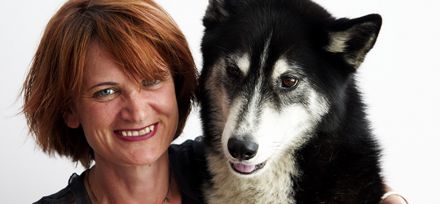Jo Case interview Sonya Hartnett about her latest novel Butterfly.

Butterfly
Of course a writer, when writing about a particular phase of life, draws on aspects of their own experience of that time – it lends authenticity, and besides that I doubt it would be possible to avoid doing so to some degree. Writing the book, I thought a lot about how the worst days of my teenagehood actually felt – the loneliness and the anger and frustration. In that regard, it wasn’t a pleasant book to write. I asked a lot of my female friends about what they remembered of really pivotal times, such as when they started to get boobs. One of my friends started bawling with the sheer horror of remembering it.
There are various ‘mean girl’ exchanges and incidents involving Plum’s friends that brought me right back to high school, and I suspect will strike a chord with many readers, teenage and beyond. Did you aim to capture a kind of universal experience of the way girls can be vicious to each other?
As I said, schoolground behaviour on the part of girls apparently hasn’t changed in the past quarter of a century – it’s probable that girls have treated each other badly since time immemorial – although I didn’t know this for sure when I was writing the novel. I don’t spend any time with teenagers, so I was simply taking a punt that modern girls are still as skilled in cruelty as were their 80s-era sisters.
What made you decide to juxtapose the experience of the glamorous housewife Maureen, longing for youth, and her awkward neighbour Plum, longing to escape it? Do you see any parallels, or were you more interested in the contrast?
The book revolves around the themes of power and abuse: Plum and Maureen are characters who are both powerless and powerful in certain situations. I wanted two characters who were very different, but also mirror-images of each other. Plum is Maureen before Maureen took what she believes are the wrongs turns of her life. Maureen is Plum, if Plum doesn’t learn to control her selfish unkindness. Maureen, being older, was always the character who should have had the power, but it is Plum, despite her general thickness, who finally affects the situation irredeemably.
Butterfly
I do – sometimes I refer to it as Of A Girl – although I don’t really know why the two books operate as companion pieces. Superficially, they share certain elements – a young protagonist, a suburban setting, moody young men – but I agree that the connection goes deeper. I don’t know why, and I didn’t intend it. I think it’s simply that, when you write a lot of books and you are interested in a limited range of themes and settings, there will be many times when one book reflects another.
In a previous interview, you observed: ‘Children live by animal rules. They’re as quick as anything to turn on somebody that they think is weak and rip that person apart.’ Do you think this is what’s happening between Plum and her friends in
Children at least have the excuse that they treat a weaker member badly almost in a primal way – as with animals, it’s a cruel but a natural thing. Teenage girls who are nasty to each other are at an age when they should know better and there is no excuse for their behaviour. I do think it’s human nature to pick on the weak – it’s an aspect of us that reveals how closely related we are to the rest of the animals – but just because it’s human nature doesn’t mean it is desirable or excusable or even forgivable. Deliberate cruelty inflicted on any living creature is, I think, the absolute most repellent of offenses.
Plum is stuck between childhood and adolescence, and has mixed feelings about the transition – longing for cupcakes, fairy bread and the gentle ribbing of her brothers one minute, and to be taken seriously as a budding grown-up the next. Were you particularly attracted to exploring that period of transition? If so, why?
I like creating characters who are teetering in some way – on the edge of violence and insanity, goodness and wickedness, innocence and wisdom. A character who can be pushed either way makes for a flexible character. Fourteen was a good age for Plum because it gave me the freedom to put her into a wide range of situations – a birthday party for a little boy, an ear-piercing session at a friend’s home – and a variety of ways in which to respond to them (as a child, or as a young woman). As a 14- year-old, she was not stuck with being the same character all the time. She could adapt to every situation in the way that was most useful to me, but also always believable to the reader.
There is a certain amount of room for interpretation in
Yes, I like leaving lots of frayed ends in my books. I write for people who like to think about what they’re reading, so I litter the books with falsehoods and unanswered questions and minor suggestions of major events. I really hate the idea that I must tell the reader everything in clunking detail. The reader is part of the experience that is a book, and I like the reader to have some input into the creation of the work – to decide what happens in the end, if need be. It’s why I never write sequels – the notion of hammering something out to utter flatness is ghastly to me. I will never tell a reader that the way they’ve read a book is wrong. Every thoughtful reading is a correct reading, as far as I can see.


